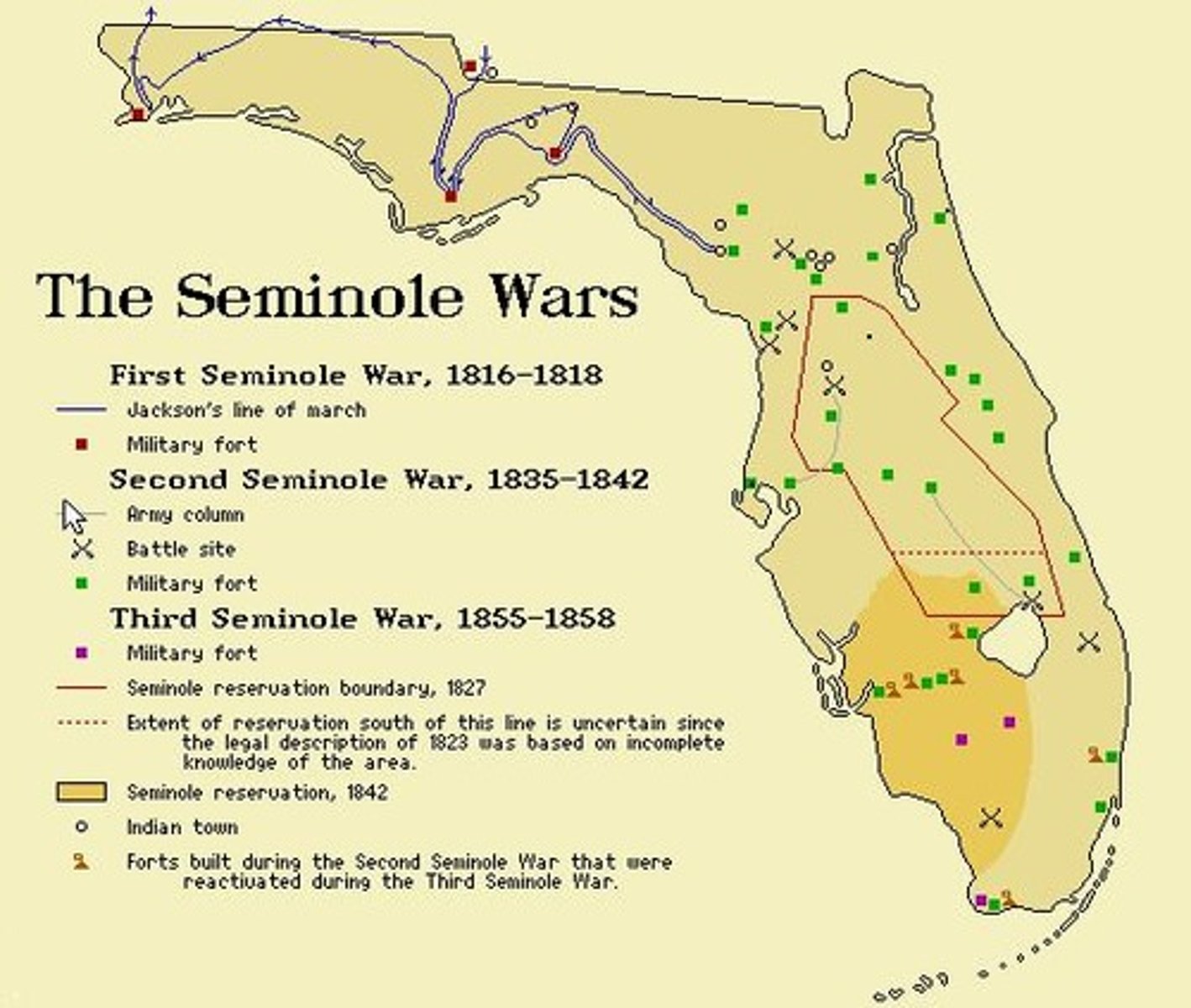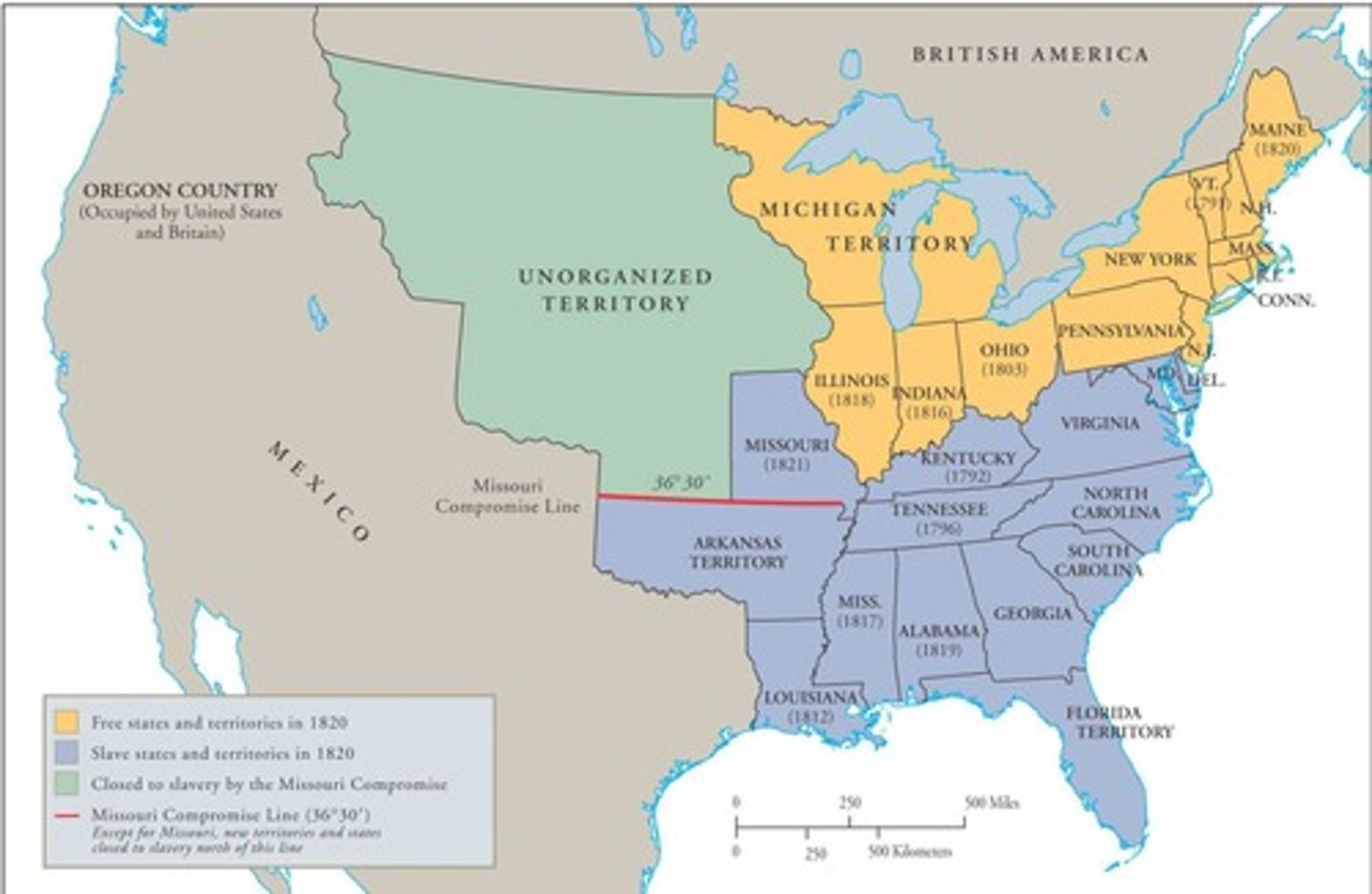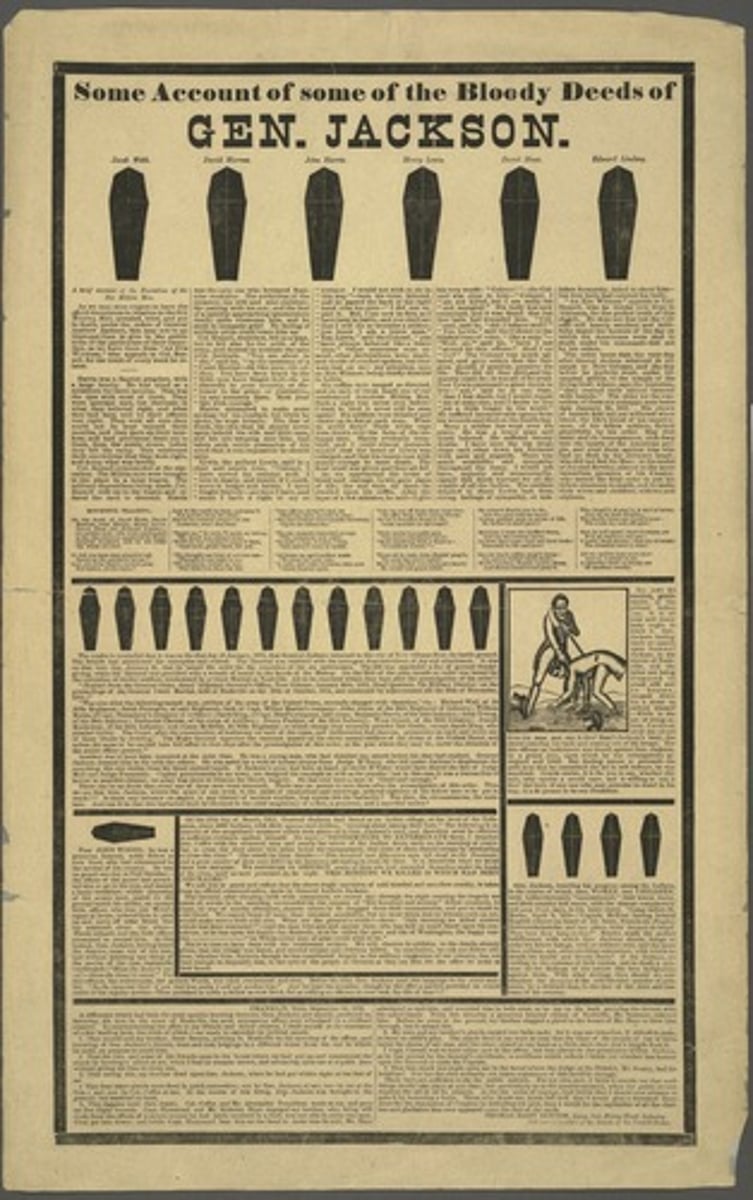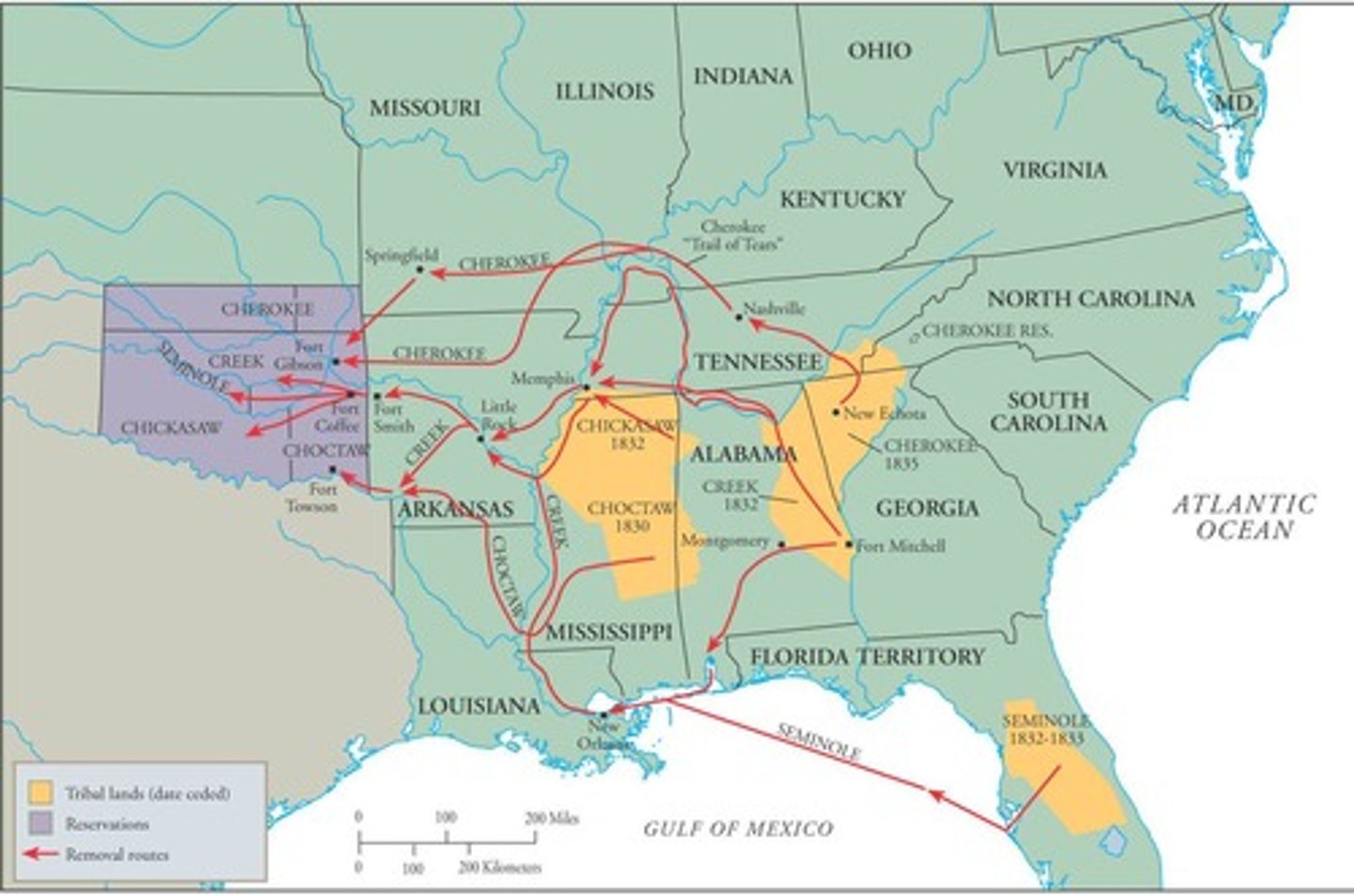American Nationalism and Jacksonian Democracy: Key Events and Concepts
1/37
There's no tags or description
Looks like no tags are added yet.
Name | Mastery | Learn | Test | Matching | Spaced |
|---|
No study sessions yet.
38 Terms
What period followed the War of 1812 and showed signs of national strength?
The period of American Nationalism.
What major divisive issue threatened national unity in the early 19th century?
Slavery.
Who were the key political figures representing new voices in American nationalism?
Henry Clay, Daniel Webster, John C. Calhoun, and John Quincy Adams.
What was the purpose of the Second Bank of the United States, chartered from 1816 to 1836?
To stabilize economic growth and provide a national currency.
What was Henry Clay's American System?
A plan that included a national bank, protective tariffs, and federal funding for transportation.
What was the Great Migration in the context of westward expansion?
A significant movement of population westward due to perceived crowding in the East and availability of cheap land.
What was the impact of the plantation system in the Old Southwest?
It led to the clearing of forests for cotton planting and the spread of slavery.
What significant treaty did John Quincy Adams negotiate to acquire Florida?
The Adams-Onís Treaty of 1819.

What economic crisis occurred in 1819, leading to widespread financial distress?
The Panic of 1819.
What was the Missouri Compromise of 1820?
A legislative agreement that attempted to balance the power between slave and free states.

What was the Monroe Doctrine?
A policy stating that the Americas were off-limits for future European colonization.
What was the significance of the case McCulloch v. Maryland?
It established federal primacy over state laws.
What was the outcome of the Election of 1824?
John Quincy Adams was elected as the 6th President of the United States.
What was the role of the Caucus System in the Election of 1824?
It was a method of selecting candidates that faced criticism for being undemocratic.
Who were the main candidates in the Election of 1824?
William Crawford, John Quincy Adams, Henry Clay, and Andrew Jackson.
What demographic changes occurred in the North during the early 19th century?
A growing urban, industrial, and commercial population.
What were the main components of the American System proposed by Henry Clay?
A national bank, protective tariffs, and federal funding for transportation infrastructure.
What was the role of John C. Calhoun in the early 19th century government?
He served as Secretary of War and later as Vice President.
What was the significance of the Latin American Revolutions in relation to U.S. foreign policy?
They prompted the U.S. to recognize the independence of Latin American countries.
What was the economic situation in the U.S. post-War of 1812?
A post-war economic boom followed by the Panic of 1819, leading to business failures and unemployment.
What was the main belief of those during the Jacksonian Era regarding inequality?
They believed that America's greatest threat was the growth of inequality and privilege, and sought to eliminate the favored status of powerful elites.
What was the Tariff of Abominations (1828) and who opposed it?
The Tariff of Abominations favored the North and West, leading to opposition from the South, which felt it disadvantaged them.
What significant event marked the Election of 1828?
It was the first campaign characterized by 'mudslinging', where negative campaigning tactics were used.
What was the significance of the Coffin Handbills during the Election of 1828?
They accused Andrew Jackson of being a murderer, exemplifying the aggressive mudslinging tactics of the campaign.

What was Jackson's stance on the federal government during his presidency?
Jackson wanted to reduce the federal government while also preserving the Union.
What was the Nullification Crisis and who was involved?
The Nullification Crisis involved John C. Calhoun's theory of nullification against the 1828 Tariff, leading to a confrontation with Jackson.
What was the outcome of the Petticoat Crisis?
The Petticoat Crisis led to the resignation of Jackson's cabinet and the rise of Martin Van Buren.
What was the Indian Removal Act of 1830?
It authorized the relocation of Native American tribes to lands west of the Mississippi River, leading to the Trail of Tears.

What were the 'Five Civilized Tribes'?
The Five Civilized Tribes included the Cherokee, Creek, Seminole, Chickasaw, and Choctaw, which were agrarian tribes of the South.
What was the Trail of Tears?
The Trail of Tears refers to the forced relocation of Native Americans, resulting in the deaths of 3,500 to 4,500 individuals.
What was the Bank War during Jackson's presidency?
The Bank War was a political struggle between Jackson and Nicholas Biddle over the renewal of the Bank's charter and the control of government deposits.
What was Jackson's view on the national bank?
Jackson viewed the national bank as a 'monster' and ultimately vetoed its renewal, leading to the removal of government deposits.
What new political parties emerged during the Jacksonian Era?
The Democratic Party, emphasizing opportunity, and the Whig Party, advocating for strong federal power and economic development.
What was the significance of the Election of 1840?
The Election of 1840 featured the Log Cabin Campaign, which introduced new techniques of political campaigning.
What was the Panic of 1837?
The Panic of 1837 was a financial crisis that led to economic depression, affecting the presidency of Martin Van Buren.
What was the role of the spoils system during Jackson's presidency?
The spoils system involved appointing supporters to government positions, reflecting the rise of mass politics.
What did Jackson mean by being the 'President of the Common Man'?
Jackson believed government should provide equal protection and benefits to all white male citizens, favoring no specific region or class.
What was the impact of Jackson's use of veto power?
Jackson used his veto power more than all his predecessors combined, which stimulated the organization of opposition.